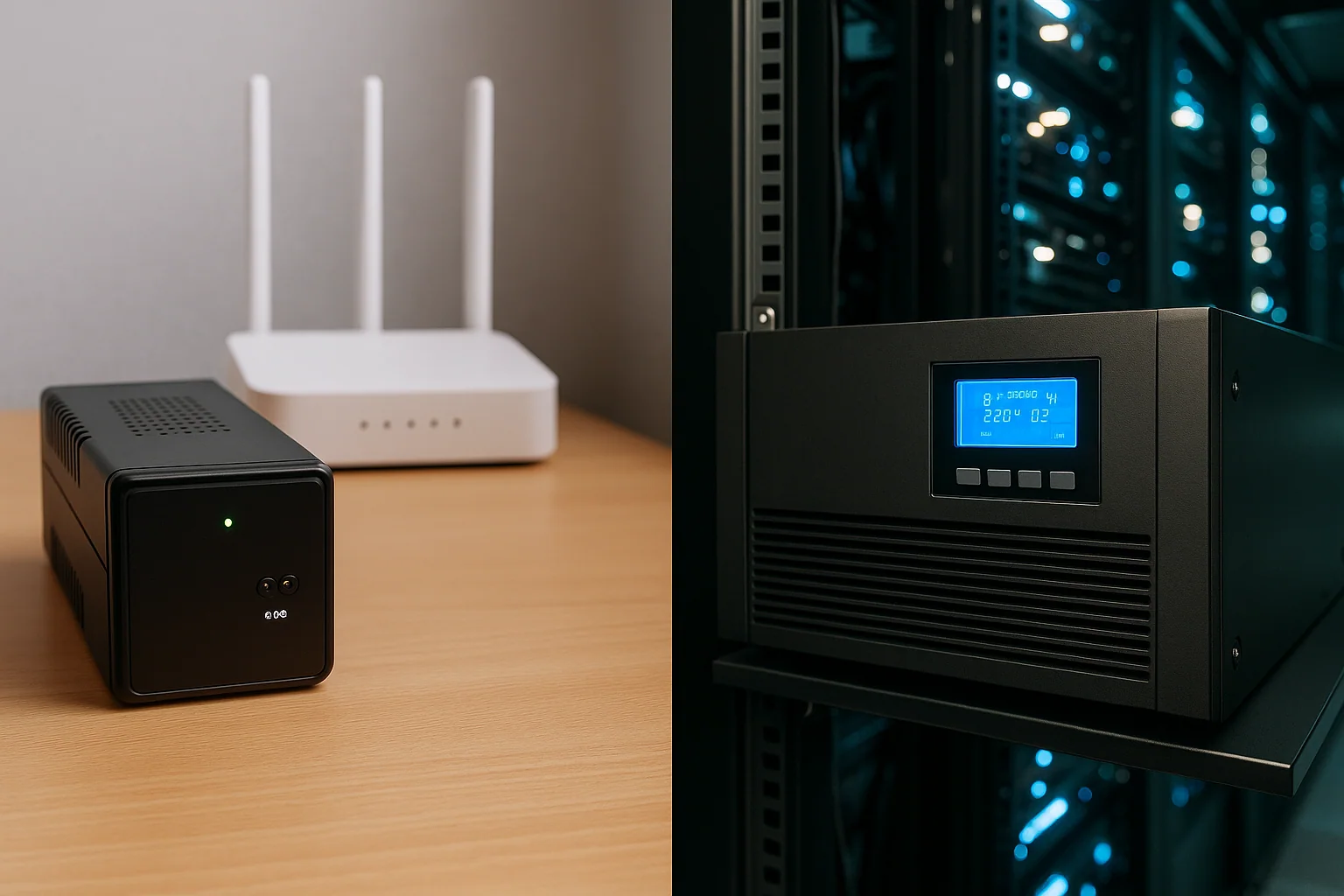What is a UPS? The smart solution to survive blackouts
Has the power ever gone out and your PC suddenly shut down? Have you lost a file you spent hours working on? Has your router gone offline right in the middle of an important video call?
If the answer is yes (or you fear it might be one day), you need to know what a UPS is, or Uninterruptible Power Supply.
After the blackout on April 28, many of us realized how vulnerable we are to sudden power outages and how much we rely on electricity to work, communicate, or simply stay connected.
That’s why this small but powerful device can save your work, protect your electronic devices, and give you peace of mind whether you work from home or in an office. In this article, we explain what it is, how it works, and why you should already have one.
What is a UPS (Uninterruptible Power Supply)?
A UPS is a system that keeps your devices powered when there’s a power outage or a voltage spike. It works thanks to a rechargeable internal battery that activates instantly to keep the power flowing for a few minutes or even hours.
There are more powerful models designed for PCs, servers, or workstations, and more compact ones ideal for routers, NAS devices, surveillance cameras, or alarm systems. In any case, the goal is the same: routers, NAS devices, surveillance cameras, or alarm systems

What happens if you don’t have a UPS?
Without a UPS, you’re at the mercy of what happens to the power supply:
- A sudden outage can shut down your computer and make you lose unsaved documents.
- A power surge can burn components like the motherboard or power supply.
- A disconnected router means losing your connection, even if your laptop still has battery.
- A NAS or external hard drive may become inaccessible and damage your files.
In short: your information, your devices, and your productivity are at risk.

Types of UPS: home and professional
There are different types of UPS depending on the environment and the type of device you want to protect. Choosing the right one depends on the power you need, the number of connected devices, and the desired backup time during an outage.
Professional UPS
Professional models are designed to offer higher power capacity and advanced features. They are ideal for environments where operational continuity and data integrity are critical.
Recommended for:
Powerful desktop computers and workstations.
Video editing, graphic design, or 3D modeling equipment.
Servers, storage systems, or advanced smart home setups.
Routers and gaming PCs.
Common features:
- Automatic Voltage Regulation (AVR) against surges or drops.
- Automatic restart when power is restored.
- USB connection for software control via PC.
- Audible alarms and scheduled system shutdown..
- Replaceable battery with multi-year lifespan.
These UPS devices usually include monitoring interfaces and programmable functions to ensure systems shut down properly or remain operational during critical moments.
Home UPS
Home UPS devices are intended for low-power equipment, where the priority is not to keep working for hours, but to avoid immediate disconnections and protect against power spikes.
Recommended for:
Routers and fiber optic modems.
Alarm or video surveillance systems.
External hard drives (NAS) or always-connected devices.
Sensitive electronic equipment at home.
Common characteristics:
- Backup time from a few minutes to a few hours, enough to save data or maintain basic connectivity.
- Standard output voltage and moderate power.
- Compact design, easy to install anywhere.
- Protection against power surges and sudden drops.
- Ideal for keeping the internet connection active during a blackout.
Although simpler than professional models, these UPS units are an excellent solution for homes, small offices, or users who need basic continuity for connectivity or data access.


Who absolutely needs a UPS?

Remote workers who depend on their connection and devices for meetings, deliveries, and remote management.

Small businesses that can't afford interruptions in administrative processes or online sales.

Gamers and content creators who use powerful equipment and can’t risk sudden power loss during a game or recording.

Users with high-performance computers who can’t risk damage to components like graphics cards, SSDs, or motherboards due to outages.
How to install and use a UPS
Installing a UPS is very simple:
- Turn off your device.
- Plug the UPS into the power outlet.
- Connect your devices to the UPS (router, PC, etc.).
- If it’s a professional model, connect the USB cable and download the manufacturer’s software.
- Configure auto-shutdown, alarms, and battery checks if supported by the model.
When a power outage is detected, the UPS automatically activates its battery and keeps your devices running. This gives you time to save your work or even continue operating for a while.
Where to buy a UPS and how much does it cost?
If you're thinking of protecting your equipment with a UPS, at Digitel you’ll find a selection of models for home and professional use, adapted to different power levels and needs, always at very competitive prices.
Whether you need a compact UPS to keep your router or alarm system running, or a more powerful solution for your desktop or professional equipment, at Digitel you’ll find several options that are reliable and easy to install, ranging from €50 to €1000 depending on your needs.
The Digitel team can help you choose the most suitable model based on the devices you want to protect and the autonomy you need, so you don’t overpay and get the exact protection your environment requires.
In conclusion…
A UPS is a small investment with big returns. It protects your time, your data, and your equipment. Avoid scares due to blackouts, power drops, or voltage spikes. Whether it’s for a powerful computer or just a simple router at home, there’s a model for you.
And remember: power can go out at any moment, but your work doesn’t have to go with it.
